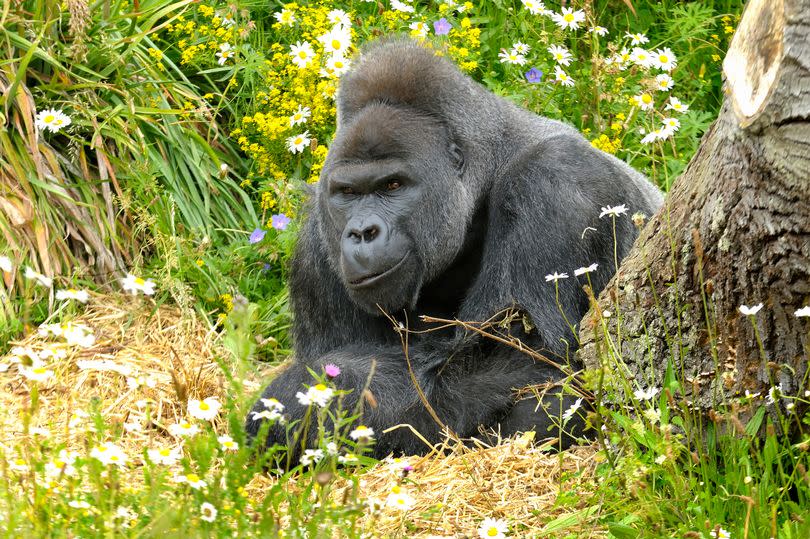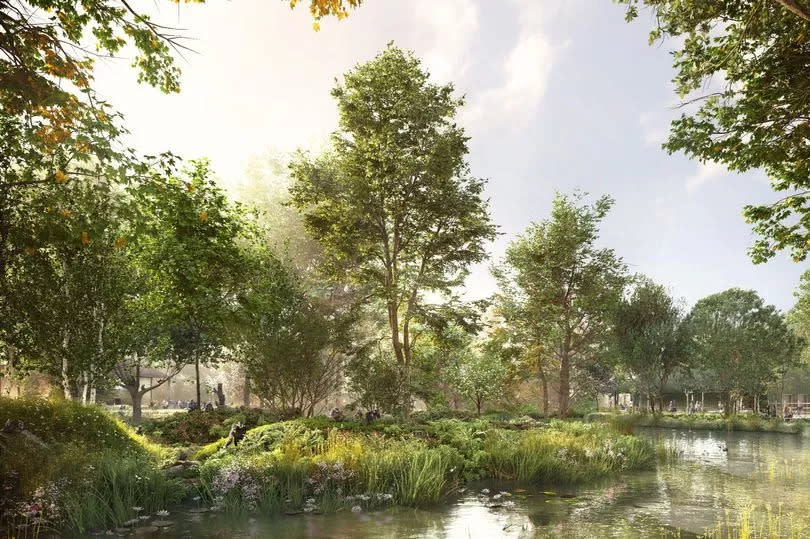Major transport improvements planned by Bristol Zoo Project with £2m investment near M5 site

The Bristol Zoo Project has announced plans to invest £2 million in public highway improvements as part of a broader scheme to enhance the conservation zoo located in South Gloucestershire, just off junction 17 of the M5. The project, previously known as the Wild Place Project before Bristol Zoo Gardens relocated from its former Clifton site, is set to introduce new exhibits, buildings and play facilities.
Currently, the zoo is working on developing the Central African Forest habitat, with work commencing later this month. This new habitat will house critically endangered western lowland gorillas and endangered cherry-crowned mangabeys together, marking a first for UK zoos.
The Bristol Zoo Project told Bristol Live. that the number of species at the zoo, currently standing at 26, is expected to more than triple by 2025. The Central African Forest is slated to open next year, with the 44 species currently housed at the former Clifton site, including gorillas, snails and fish, set to be transferred to the new location.
READ MORE: easyJet launches three new routes from Bristol Airport
READ MORE: Mapped - which beaches are no-go areas for swimmers in 2024 due to chronic pollution
Additionally, a new conservation-themed adventure play area, dubbed Explorers Basecamp, is due to open in July, just in time for the summer holidays. Over the coming years, the Easter Compton zoo will also see the introduction of new retail areas, catering facilities and a Conservation Campus, gradually filling up the expansive 136-acre site.

A whopping two million pound investment announced by the Bristol Zoo Project will funnel into public highway improvements, including the creation of two new bus stops outside of the site. This is set to enhance access for both pedestrians and cyclists while also establishing fresh on-site bus and coach pick-up/drop-off points.
Additional facilities like electric vehicle charging points are planned for the car park, coupled with a brand-new footpath on Blackhorse Hill.
With an eye on education, the zoo unveiled plans for a Conservation Campus situated on-site that aspires to transform into a regional hub for skills and information on conservation, veterinary medicine, and animal breeding.
In a nod towards preserving wildlife, visitors will be granted an insider's view of the Veterinary procedures and get a glimpse of animals on the brink of extinction in the wild but bred for reintroduction within the facility. The breeding centre anticipates welcoming an array of at-risk species - from reptiles and amphibians to fish and birds.
Justin Morris, Chief Executive of Bristol Zoological Society, said: "This is a hugely exciting time for us, as work gets underway this month on our new Central African Forest habitat. This is the first major development in our plan to create a new conservation zoo at Bristol Zoo Project. A second habitat, Central African Savannah, will also be created in the future and become home to black rhino and red-necked ostrich, joining our existing giraffe, zebra and cheetah.
"We will also be building a new Conservation Campus, which will include conservation, veterinary medicine, animal breeding and learning centres. This will create a new education and skills hub for the region, with 20 new learning spaces. In addition, it will provide teaching facilities for more than 600 students each year, participating in our higher education programmes, and help us on our way to achieve our target of engaging 90,000 school children.
"In the future, we will be creating new admissions, retail, catering and play facilities to provide the best visitor experience possible. To promote sustainable travel, we will be investing £2m in public highway improvements.
"This will include new on-site bus and coach pick up/drop off points, two new bus stops outside of the site, improved access for cyclists and pedestrians, and electric vehicle charging points in our car park. We will also be creating a new footpath on Blackhorse Hill, improving access to Easter Compton."
The plans are part of ambitions to increase the number of endangered and critically endangered species that will live in the conservation zoo. Currently 78 percent of animals at the zoo are endangered, but the aim is to raise the percentage to 90 by 2035.
Mr Morris added: "The zoo will become home to some of the world's most threatened species. Currently, 78 percent of the animals we care for are both threatened, and part of targeted conservation programmes and our aim is for this to rise to 90% of species by 2035.
"Bristol Zoological Society works in nine countries, across four continents, working to conserve and protect species that are in most need of help. We're currently involved in 40 co-ordinated breeding programmes and directing 14 field conservation projects with 31 local partner organisations.
"Bristol Zoo Project protects threatened habitats on our doorstep, such as British woodland, and around the globe, including in Madagascar, Philippines and Equatorial Guinea. This new conservation zoo at Bristol Zoo Project, will support significant growth in our conservation and education work and offer an innovative and exciting visitor experience. This will ensure future generations of children can come face-to-face with animals in nature and the Society can continue its critical conservation and education work."

 Yahoo News
Yahoo News 
